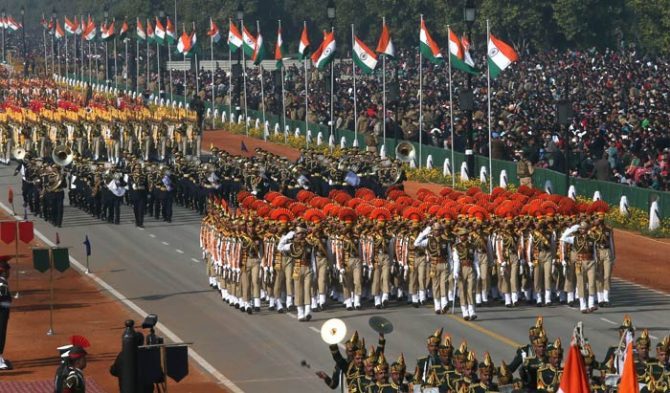The 26th of January, 1950 is a day that India will never forget. The Indian Constituent Assembly adopted the Constitution on 26 November 1949, and it came into effect on 26 January 1950 with a democratic government system. This completed the country’s transition towards becoming an independent republic and replaced the Government of India Act (1935) as the governing document of India. The date became an important one in the life of every Indian and the day became known as India’s Republic Day.
26 January was chosen as Republic Day because it was on this day in 1930 when Declaration of Indian Independence (Purna Swaraj) was proclaimed by the Indian National Congress as opposed to the Dominion status offered by British Regime.
The History of India’s Republic Day
India achieved her independence from British rule on 15th August 1947 thanks to Mahatma Gandhi’s Quit India Movement 1942 which was a largely peaceful and non-violent endeavour. This independence came through the Indian Independence Act 1947. This was an Act that partitioned British India into the two new independent Dominions of the British Commonwealth (later Commonwealth of Nations).
On 28 August 1947, the Drafting Committee was appointed to draft a permanent constitution, with Dr B R Ambedkar as chairman. While India’s Independence Day celebrates its freedom from British Rule, Republic Day celebrates the coming into force of its constitution. A draft constitution was prepared by the committee and submitted to the Assembly on 4 November 1947. The Assembly met, in sessions open to the public, for 166 days, spread over a period of two years, 11 months and 18 days before adopting the Constitution. After many deliberations and some modifications, the 308 members of the Assembly signed two hand-written copies of the document (one each in Hindi and English) on 24 January 1950. Two days later, it came into effect throughout the whole nation. (Information credit – Wikipedia)
In doing so, the constitution gave Indian citizens the right govern themselves by choosing their own government. Dr Rajendra Prasad took oath as India’s first president at the Durbar Hall in the Government House, followed by a residential drive along a route to the Irwin Stadium, where he unfurled India’s national flag. Ever since the historic day, January 26 is celebrated with festivities and patriotic fervour across India as Republic Day.
Republic Day celebrations
Republic Day celebrations are held all across the country but it is the capital, Delhi where the pomp and splendour are on a large scale. The main celebrations on this day are held at the Rajpath with the President of India in attendance along with the Prime Minister and other dignitaries. A grand parade takes place, showcasing India’s Defence Capability, Cultural and Social Heritage. All three branches of the country’s proud and elite armed forces, the Army, the Navy and the Air Force participate in the parade.
Nine to twelve different regiments of the Indian Army in addition to the Navy and Air Force with their bands march past in all their finery and official decorations. The President of India who is the Commander-in-Chief of the Indian Armed Forces takes the salute. Twelve contingents of various para-military forces of India and other civil forces also take part in the Republic Day parade.
The parade also showcases the artistic talents and skills present in each state. Participants put up floats, each staging a scene or tableau that is unique to the individual state alone. It is actually an extremely colourful and beautiful sight. If you’re ever in Delhi on Republic day, be sure to go watch the parade.

Image credit – NDTV.com
Republic Day is a gazetted holiday in India. Government offices, banks, most businesses and all schools remain closed so that all get a day off.
Information credit – Wikipedia, https://www.timeanddate.com/holidays/india/republic-day
ItsGoa/JAN/KDGP


